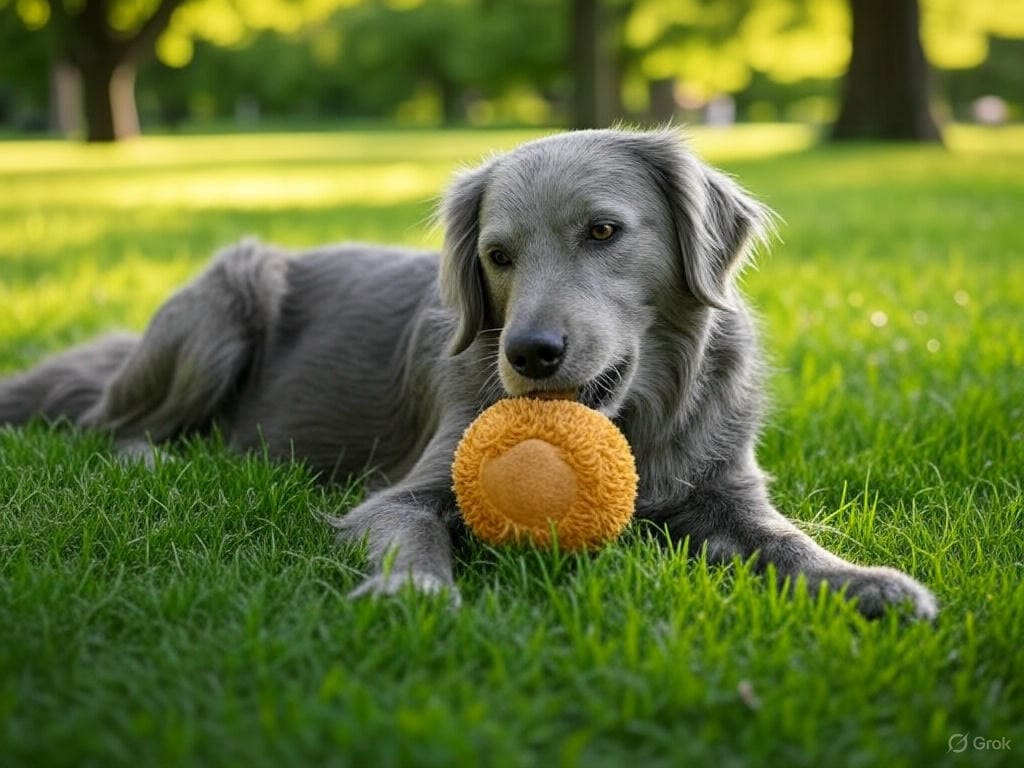Learn how adapted physical activities can help your senior dog stay active, reduce joint pain, and improve quality of life.
Discover the importance of safe and adapted exercises for senior dogs with arthritis. Improve mobility, relieve pain, and support your dog’s well-being.
How Arthritis Affects Dogs’ Mobility
Arthritis is an inflammatory joint condition that primarily affects senior dogs, causing chronic pain and discomfort. It’s typically the result of natural wear and tear over time, but can also be linked to trauma, genetics, or developmental joint issues. Commonly impacted areas include the hips, knees, shoulders, and spine, making everyday movements more difficult.
Symptoms include joint stiffness, trouble getting up, reluctance to climb stairs, and a noticeable decrease in interest in playing or exercising. Over time, the lack of movement can lead to muscle loss and increased joint stiffness, creating a painful cycle of inactivity.
To break this cycle, it’s essential to introduce gentle, targeted exercises. When done correctly, they can help maintain mobility, support joint health, and preserve your dog’s overall well-being.
Benefits of Adapted Exercises for Dogs with Arthritis
Adapted physical activity is one of the most effective ways to support the health of senior dogs with arthritis. When tailored to your dog’s condition, exercise offers a wide range of physical and emotional benefits:
Improved Circulation and Muscle Oxygenation
Gentle movement helps stimulate blood flow, delivering oxygen and nutrients to muscles and joints. This aids in reducing inflammation and supporting recovery, while also flushing out built-up toxins.
Reduced Joint Stiffness
Low-impact activities like short walks and light stretching help maintain joint flexibility. This reduces stiffness and makes movement easier, contributing to better posture and comfort.
Strengthened Support Muscles
By building the muscles that support arthritic joints, your dog gains stability and reduced strain on painful areas. Stronger muscles also improve coordination and reduce the risk of further injury.
Enhanced Mental Well-Being
Pain and limited mobility can cause emotional distress in dogs. Regular, enjoyable activities help relieve stress and anxiety, improving mood and creating a sense of routine and purpose. Interacting with their human during play or walks also reinforces the emotional bond.
In short, adapted exercises go far beyond physical relief—they play a key role in keeping your dog happier and healthier for longer.
Safe Exercise Options for Dogs with Arthritis
Choosing the right type of exercise is essential to avoid putting extra stress on arthritic joints. Here are some of the most recommended low-impact activities:
Short, Frequent Walks
Instead of long, exhausting outings, take multiple short walks (10 to 20 minutes) throughout the day. Keep a relaxed pace, and allow your dog to take breaks as needed. Choose soft, grassy surfaces to minimize joint impact and avoid rough or slippery terrain.
Supervised Swimming
Swimming is ideal for dogs with arthritis. The water supports your dog’s body weight, reducing joint stress while allowing free movement. It strengthens muscles, boosts circulation, and doesn’t strain the joints. Always supervise swimming sessions and choose a safe, temperature-controlled environment.
Gentle Stretching
Incorporate basic stretches to promote flexibility and prevent stiffness. Gently extend your dog’s front and back legs in smooth, controlled motions—never force the stretch. These can be done before or after walks to help warm up or relax your dog’s muscles.
Always consult your veterinarian before starting a new exercise routine to ensure your dog’s safety and comfort.
Important Precautions When Exercising Senior Dogs
While exercise is beneficial, it must be approached with care for senior dogs with arthritis. Keep the following precautions in mind:
Watch for Signs of Fatigue or Pain
Pay close attention to how your dog responds. Signs like heavy panting, limping, or hesitating to move are red flags that it’s time to stop and rest. If discomfort continues, seek veterinary advice to adjust the activity level.
Choose Soft, Non-Slip Surfaces
Hard floors or concrete can worsen joint pain and increase the risk of slipping. Opt for grassy areas outdoors and use rugs or rubber mats indoors to provide better traction and cushioning during movement.
Adjust Intensity Based on Your Dog’s Response
Start with low-intensity exercises and gradually adapt the routine based on your dog’s tolerance. Consistency is more important than intensity. Gentle, regular movement is the key to long-term benefits.
With the right approach, you can help your dog stay active, engaged, and comfortable throughout their senior years.
Why Veterinary Support Is Essential
Veterinary guidance is crucial when creating a safe and effective exercise routine for dogs with arthritis. Your vet can evaluate your dog’s condition and recommend activities that suit their individual needs.
Personalized Exercise Plans
No two dogs are alike, and arthritis can vary in severity. A veterinarian can assess joint health, pain levels, and overall mobility, then suggest a tailored plan with safe exercises, proper frequency, and intensity.
The Role of Canine Physical Therapy
In addition to daily exercises, physical therapy can significantly improve joint health and mobility. Certified canine therapists use targeted techniques such as massage, stretching, and hydrotherapy to relieve symptoms and improve flexibility.
Ongoing Evaluations and Adjustments
As your dog ages, their needs may evolve. Regular checkups ensure that the exercise routine continues to be effective and safe. Your vet may also suggest new treatments, medications, or supplements to manage pain and improve outcomes.
With veterinary support, you’ll have expert guidance to help your dog stay mobile, pain-free, and happy.
Conclusion
Helping a senior dog with arthritis stay active through adapted exercises is one of the best ways to support their health and quality of life. With gentle activities like short walks, swimming, and stretching, you can ease joint stiffness, strengthen supporting muscles, and improve emotional well-being.
Always prioritize your dog’s comfort and safety, adjust routines as needed, and work closely with your veterinarian. With care, patience, and the right approach, your furry friend can enjoy their golden years with dignity, joy, and movement.

